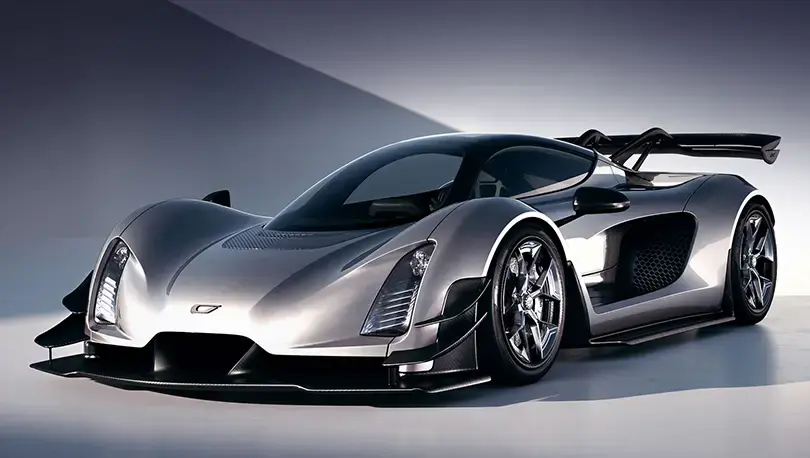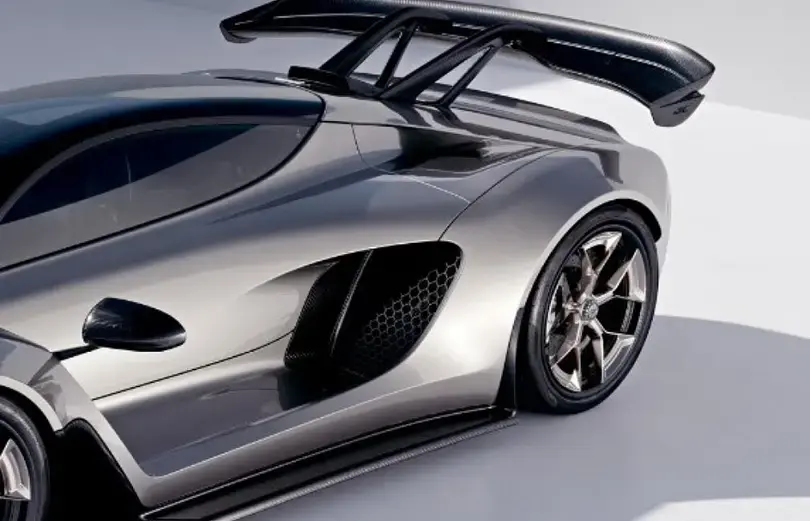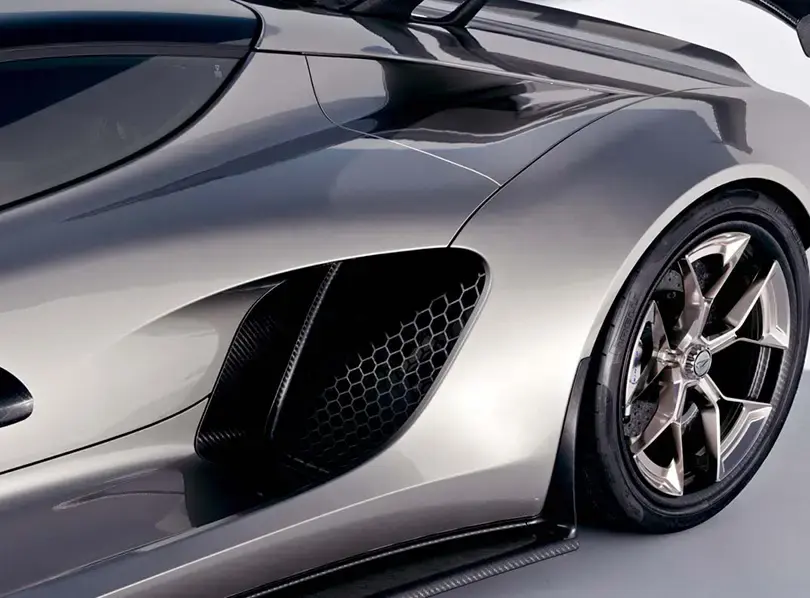California has once again become the place where automotive history is rewritten. This time, the world’s attention was drawn to the Czinger 21C hypercar, developed in Los Angeles, which broke records on five California racetracks at once.
The car not only proved its incredible speed and maneuverability but also showed that the future of the auto industry lies in new manufacturing technologies, hybrid engines, and unconventional approaches to engineering.
From Startup to Global Sensation
Czinger Vehicles was founded in 2019 by entrepreneur Kevin Czinger. At first, the project seemed like a bold dream — to create a new-generation hypercar that would stand out not only for its power but also for its radically new production method. Instead of traditional assembly lines, engineers bet on 3D printing and robotic assembly.
The result was the Czinger 21C — a hybrid hypercar with more than 1,250 horsepower, combining a V8 gasoline engine and electric motors. But the most fascinating part is not just the numbers, but the philosophy: the car was created using artificial intelligence and generative design.

Technology of the Future: How the Czinger 21C Is Made
Ordinary cars are designed by human engineers, and parts are manufactured on huge industrial lines. Czinger took another path.
- Every component was designed using AI algorithms, which analyzed aerodynamics, strength, and weight.
- The parts were 3D-printed, then assembled into a single car “skeleton.”
- This method made it possible to achieve minimum weight with maximum strength, reduce waste, and save materials.
In essence, the Czinger 21C became the first production car born from digital technology.
Records on California Tracks
In the summer of 2025, the Czinger 21C went on a tour of California racetracks. The results impressed even skeptics: the car set records on five tracks in a row, including Laguna Seca, Buttonwillow, and Willow Springs.
Each race proved one thing — this machine is not just a beautiful concept, but a real champion capable of competing with iconic manufacturers like Ferrari, McLaren, and Bugatti.
- At Laguna Seca, the Czinger 21C broke the lap record, surpassing McLaren P1’s achievement.
- At Willow Springs, the car showed a unique combination of power and cornering stability, which was especially impressive for a hybrid.
- On other tracks, the results were the same: Czinger left no chance for rivals.

Inside the Hypercar: What Makes It Unique?
In addition to record-breaking performance, the 21C impresses with its features.
- “Fighter jet” style cockpit: the driver sits in the center, with the passenger behind — like in a military aircraft. This improves aerodynamics and makes the ride unique.
- Top speed exceeds 400 km/h (250 mph), and acceleration to 100 km/h (0–60 mph) takes less than 2 seconds.
- Hybrid powertrain combines a V8 gasoline engine with electric motors, adding instant torque and better grip.
Impact on the Auto Industry
The Czinger 21C became not just a car but a symbol of a new era in automotive manufacturing. In a world focused on electrification and sustainability, this California hypercar shows that the future can be different.
- It’s more eco-friendly than traditional manufacturing, since 3D printing reduces waste.
- It’s faster and cheaper, as many parts can be created without massive factories.
- It’s more flexible, since digital models can be instantly updated.
For California — long known as a hub of innovation — the Czinger 21C is a natural continuation of its tradition: here, ideas are born that change the rules of the game.
Comparison with Competitors
When hypercars are discussed, names like Bugatti Chiron, Koenigsegg Jesko, or Rimac Nevera usually come up. But Czinger 21C has its own aces:
- Low weight and unique aerodynamics give it an advantage in corners.
- The hybrid system makes it more versatile compared to purely gasoline-powered cars.
- 3D-printing technology allows design updates faster than traditional automakers.
In fact, Czinger has challenged the giants and proved that a small startup can surpass industry titans.

Hypercar and the Roads of the Future
Of course, the Czinger 21C is not a mass-market car. Its price exceeds several million dollars, and production is limited to a few dozen units. But its significance is much broader.
What is used in hypercars today may appear in production cars tomorrow. Already, major carmakers are studying Czinger’s experience for future models.
We can confidently say that within 10–15 years, elements of 3D printing and generative design will become standard in the auto industry.
Conclusion: A New King of the Tracks
The story of the Czinger 21C is a story about how a bold idea can change an entire industry. In an era where the focus is on electric cars and sustainability, this California hypercar reminds us that cars can also be breathtakingly fast, beautiful, and innovative.
By winning on the track, the Czinger 21C has become a symbol that the future of the auto industry is being born right here — in California, where technology and passion for speed come together.





